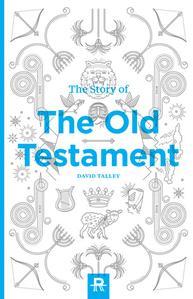Dave Talley, professor of biblical and theological studies at Talbot, just released the new book, The Story of the Old Testament. He graciously took some time to answer a few questions about the book.
 We heard that you recently released a new book. What is the book about?
We heard that you recently released a new book. What is the book about?
The Story of the Old Testament is intended to be a survey of the Old Testament (OT) that seeks both to instruct the mind and to impact the heart. However, this survey is unique in two respects:
First, instead of focusing on all thirty-nine books of the OT, it brings unique focus to eleven books. These eleven books contain the basic continuous story of the OT, thus enabling the reader to more readily engage “the story” leading up to the New Testament. The remaining twenty-eight books are either discussed individually because of their historical nature (Leviticus, Deuteronomy, Ruth, 1 and 2 Chronicles, and Esther) or as a unit because their contribution to the OT is similar. It is important to note how the books fit into “the story” and what is the particular focus of the books. In the latter category, the two units are the prophetic books and the poetic books. With the particular focus on “the story,” the books in these two units do not necessitate individual focus. The reader simply needs to know how each unit fits into “the story” and what is the focus of each book in the unit (poetic books) or what is the focus of the unit as a whole (prophetic books).
Second, the book has a strong focus on theological application for the Christian. Most surveys focus on massive amounts of information, which is useful in understanding the OT better, but they generally lack a connection to the heart of the believer. To address this lack, the content of this book is sprinkled with chapters on theological reflection with the purpose of answering the questions, “So what does this have to do with Christians?” There is a cadence to the book: content followed by theology, content followed by theology. This cadence causes the reader to not only understand the OT better but also to grasp the relevance for his/her own life.
Who is your target audience and how will they benefit from reading the book?
My target audience is any Christian who decides to engage the OT in order to understand it better. I teach undergraduate Bible courses, so these students were primarily in my mind. However, the book provides an excellent introduction of the OT for undergraduate students, graduate students, or Christians in the local church alike.
The benefit for those who read this book is that they will gain a deeper understanding of the content of the OT while growing in their understanding of the relevancy of the OT. I firmly believe that readers will find a new appreciation for the OT as Christians and make the necessary connections to their everyday life. They will also be able to open their Bibles and read from any book of the OT with less fear.
What led you to write the book? How does this book relate to your previous scholarship? And how does it intersect with your classroom teaching at Talbot?
I wrote this book because there was not a book like it available for Christians. The last thing I wanted to do with my time was write a book that was simply my own perspective on a topic about which fifty people had already written. I deeply appreciate the number of good OT surveys on the market, but I did not feel the church needed one more survey. The church needed a book that would help them engage the message of the OT and to see its relevancy to their lives. I wrote because I wanted to help Christians move away from the mentality that the OT is comprised of “throw away” books, which are not necessary for Christians or which are too difficult to understand.
As a young professor, I deeply wanted my students to engage God’s word and to appreciate the OT, so I began designing my lectures and course assignments to this end. Slowly, the ideas began to emerge into the contents now found in this book. When I revised it all into a more mature format, I wanted to share it with others so that they too could be impacted.
By putting this information into book form, it now allows me to be more creative with how I spend my class time. I am still learning how to do this, but slowly I am revamping the way I teach so that I can rely on the book to teach my students, which will free me up to discuss other topics in class or to reinforce what they are reading. In the next five years, I hope to gain a clearer sense of how to do this.
Can you share with our readers a small excerpt (a paragraph or so) from the book?
“In our thirst, we wait expectantly. Rather than demand satisfaction now, we seek to live for his glory and according to his purposes. We cry, 'I will wait for him to satisfy me in his way and in his time.' As we long for more than this world can give, we choose to wait for him. He gives abundant life now, and we know the eternal life that awaits us. He alone is life and rest is only found in him. He gives a peace that passes understanding. We also know that he has gone to prepare a place for us and that this world is not our home. In the midst of the pain and difficulty, we wait for the day when he will restore all things to himself. Ultimately, we come to realize that satisfaction is not found in relief, but rather in him. He is life abundant, both now and forever.”
In a sentence or two, what is the main “TAKE AWAY” you want your readers to get from your new book?
I would want there to be a deeper appreciation for the words “All scripture is inspired by God and IS PROFITABLE.” I would want others to grow in the grace and knowledge of the Lord Jesus Christ.
The Story of the Old Testament, David Talley, Reclaimed Publishing, 2013, 252 pages.
 Biola University
Biola University.jpg)
.jpg)

